Manu A B in Mumbai
Medsynaptic, a teleradiology company, was born in 2004 when two doctors decided to turn into entrepreneurs with an investment of just Rs 1 lakh (Rs 100,000).
Their mission was to develop innovative and user-friendly products for the medical imaging industry. Today, the company's value stands at Rs 40-50 crore (Rs 400-500 million) with revenues and profits growing at 100 per cent year-on-year.
Teleradiology is the transmission of C-rays, CTs, MRIs, etc from one place to another for interpretation or consultation.
Ashish Dhawad and Prashant Lahane wanted to offer the most advanced products at cost-effective prices, making such tools readily available to improve the healthcare systems across the world.
Six years down the line, the company has launched a range of cutting-edge IT products, including patented devices, to improve healthcare systems.
When Ashish dediced to take the plunge, healthcare informatics was not developed in India. "I believed this would be a great challenge as an entrepreneur to make Indian hospitals and doctors understand how informatics can improve their workflows, reduce costs and ultimately provide better patient care," says Ashish Dhawad.
Medsynaptic's teleradiology platform provides instant reports for emergency patients saving hundreds of lives every year.
"Today, multinational companies like GE Medical, Siemens, Fujifilm compete with us in the enterprise products but also partner with us in the standalone products," says Ashish Dhawad.
Medsynaptic has been chosen as one of the top 10 Information Technology start-ups for 2010 at the Nasscom Emergout Conclave.
Ashish Dhawad shares experience of being entrepreneur and how his venture is making waves in the healthcare sector.
...
Medsynaptic: From Rs 1 lakh to Rs 50 crore!
Image: Bullish on bioinformatics.After completing my graduation in medicine, I came to know about this new course in Pune University which offered interdisciplinary knowledge of biology, informatics, genetics and how to apply this knowledge in developing tools for healthcare.
I was very interested in this and felt that this would be a game-changer in the future. After doing his post graduation in bioinformatics, our course director Dr Kolaskar, inspired me to step into entrepreneurship rather than doing a job somewhere.
Along with another doctor, Prashant Lahane, I co-founded this company. Luckily we could build a great team early in our journey with team members like Sanjay, Nilesh, Rahul, Santosh, Amit, Anjali, Rajesh who are still there and growing with the company.
...
Medsynaptic: From Rs 1 lakh to Rs 50 crore!
Image: eXray -- film scanner and xImager.Our company has a complete suite of end-to-end medical imaging solutions.
We have standalone products like SonoDoc and ScopyDoc for Ultrasound Image Management and Endoscopy Image Management, ScanDoc Workstation for multiple modalties like CR, DR, CT, MRI, etc. CardioDoc workstation is used for Cathlabs.
Then we have products like ScanDoc A2D for legacy equipment like refurbished CT/MRI scanners to convert them into DICOM.
We have also developed Freehand 3D imaging for Ultrasound and CT/MRI which can work with any equipment model.
Couple of hardware products that we have developed include eXray -- film scanner and xImager -- C-Arm memory.
Both these products have been patented by us and use highly advanced technologies.
We have also developed the first indigenous, fully web based PACS (Picture Archival & Communications System) which far exceeds any product available in the market today in terms of technology and features.
This product is installed across hospitals to provide distribution and archiving of images. A lighter version of this product called MiniPACS is offered to diagnostic centres and small hospitals.
Our company was the pioneer in developing low bandwidth Teleradiology in India and we started offering solutions using standard phone modems many years ago.
With the advent and wide availability of broadband, Teleradiology product had picked up really well. We have hundreds of customers using our cloud based web Teleradiology platform to provide instant reports for emergency patients thereby saving hundreds of lives every year.
At the same time, this technology can be used with any type of Internet bandwidth like mobile data cards so the radiologist can report scans from anywhere even while travelling.
Using special compression technologies that we offer, the users are able to download large volumes of data in a very short time.
...
Medsynaptic: From Rs 1 lakh to Rs 50 crore!
Image: Ashish Dhawad at work.Medical Informatics is a broad area which includes Hospital Information Systems, PACS, EMR, Lab Information Systems, Telemedicine etc. Medsynaptic is focused on the Medical Imaging Informatics and PACS segment and we enjoy a very good marketshare in this segment.
We probably have the highest number of PACS installations in the Indian market today and are growing rapidly in the international market as well.
How is the demand for your innovative products? What is your USP?
The demand for our products is growing every year. Most of our products are leaders in each segment be it standalone products or enterprise products like PACS or Teleradiology.
Our USP has been to provide the most advanced, most user-friendly products at cost effective prices. Our products help clients manage, distribute, transfer, store and process large image datasets easily thereby leading to a filmless hospital.
They also help the clients to reduce cost of consumables and become eco-friendly by reducing x-ray film and chemicals.
...
Medsynaptic: From Rs 1 lakh to Rs 50 crore!
Image: Medsynaptic's products.They definitely are more cost-effective than international products but cost is not the only factor which has been responsible for the success and popularity of our products.
More than cost, the quality, user-friendliness and stability of our products with the strong service support that we offer have played a strong role in Medsynaptic becoming the leading player today.
What kind of constraints did you face initially?
In the initial years, we had to work hard to create a market for our products. Our clients were used to working with traditional non computer based technologies and we had to convince them to shift to computer-based software.
We had to show them how it will bring improve their practices and save costs apart from giving them several other advantages like patient data archival and easier search of records.
We had to build up the right team and had to make sure we retain them for continuity. Being a new company we also had to prove that our products are much superior and go out of our way to convince about our ability to deliver.
...
Medsynaptic: From Rs 1 lakh to Rs 50 crore!
Image: Medsynaptic team celebrating pink day.We started off with our own money of about Rs 1 lakh (Rs 100,000) and two people. We have also maintained a tight control over our expenditure and ploughed back most of the profits into the business to grow it. In the initial years, all our team members took salaries which were enough to sustain themselves.
Debt financing was difficult to come as software business has no collaterals and it was too early to attract venture capitalists or other investors. So we had to build our business with the money we have generated from profits.
We also had to allocate some budget every year for research and development to innovate and create new products. All of these efforts seem to have paid off.
How many hospitals/diagnostic centres use your products? In how many countries?
Medsynaptic has a very large and diverse installed base. We have more than 6,000 installations in 35 countries today and we are growing further.
Our clients range from individual radiologists and surgeons to diagnostic centers as well as small, medium and large hospitals. We have clients in the government hospitals and private sector.
Many of our clients are also MNC equipment manufacturers like Philips Medical, Siemens, Carestream, RFCL, etc which bundle our products with their machines.
We have also partnered with Hospital Information System companies like Wipro Healthcare to provide an integrated HIS-PACS to clients.
...
Medsynaptic: From Rs 1 lakh to Rs 50 crore!
Image: Development team.It's been absolutely terrific! Our customers are our mainstay and we have grown successful with their support.
Many of our customers started by using one standalone product and based on the quality, stability and the service support we provided, they have now moved to using our enterprise products like PACS.
Many of our customers have also worked with us to improve the products based on their usage and ideas.
What kind of challenges do you face now?
We are on a high growth trajectory and one of our challenges today is to attract the right talent to continue on this growth path.
We also need further capital to expand our presence internationally and to increase our development team.
On the technology side the challenge is to keep innovating and improving our products to remain a step ahead of our competition.
...
Medsynaptic: From Rs 1 lakh to Rs 50 crore!
Image: Medsynaptic team.Medsynaptic has been profitable right from the first year. We have run a very tight ship with control on expenditure and that has helped us stay afloat during the lean periods.
Currently, our revenues are growing rapidly and we expect to double our growth every year. Along with that we have been successful in generating very good profits to sustain our growth.
How do your evaluate your work so far?
I think we have achieved some success, but this is not the end. We have built up a successful business with innovative products, strong team and a large customer base.
Our next job is to leverage these strengths and scale up to a position which will make us a global player in the PACS and teleradiology market. At that point of time, I would be very proud to say that we are an Indian PACS multinational.
This will be a complete reversal, as traditionally the PACS market in India as well as internationally has been dominated by non-Indian MNCs. We have a long journey ahead and I am sure there will be several obstacles in the way, but I am confident we will overcome them.
...
Medsynaptic: From Rs 1 lakh to Rs 50 crore!
Image: Medsynaptic team during a tour.I love my role as an entrepreneur. Every day is a new challenge and the excitement of creating value for our customers and employees provides a great boost.
Our products and technology have helped doctors save many livesand the satisfaction that comes with this knowledge is even more important than financial gains.
India is a growing economy and I believe the potential of Indian entrepreneurs has not been unleashed completely.
Due to economic liberalization, Indian entrepreneurs did get a lot of opportunities and they have shown their calibre by building many world class companies.
But India itself is a huge opportunity and Indian entrepreneurship will take giant strides in the years to come for which many more Indians need to become entrepreneurs.
...
Medsynaptic: From Rs 1 lakh to Rs 50 crore!
Image: Marketing team with co-founder Prashant Lahane (5th from the left).1. Knowledge and skills
2. Team management
3. Perseverance
4. Strong customer focus
5. Ability to take risks
What can be done to create more innovators, entrepreneurs so that India can be an innovation powerhouse?
Indians have an inherent capability to innovate and become successful entrepreneurs but having an environment which sustains this innovation and gives wings to their ideas is required.
To become an innovation superpower a few things that are required are:
- Eco-system to mentor and sustain innovation
- Access to quick, cheap capital
- Quicker regulatory approvals wherever required
- Good infrastructure
- Research and development partnerships with universities/govt institutions
...
Medsynaptic: From Rs 1 lakh to Rs 50 crore!
Image: Ashish Dhawad with the team.Medsynaptic plans to scale up internationally and continue developing innovative products and technology in the future.
While India remains our primary market and we plan to expand our reach further into the enterprise PACS and Teleradiology segment, we are aggressively looking to expand overseas specially in the Middle East, South East Asia and African markets.
We are talking to several partners in these countries and have also achieved US FDA approval for our products.
This will help us gain a foothold in the United States, as well.

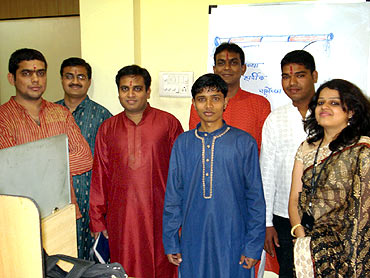
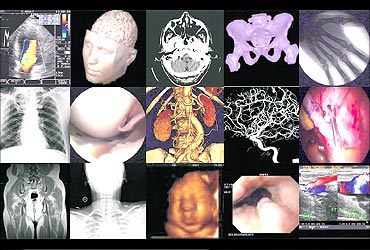
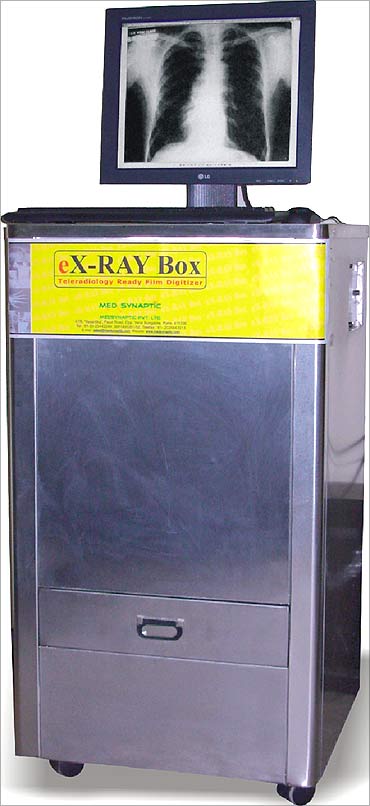
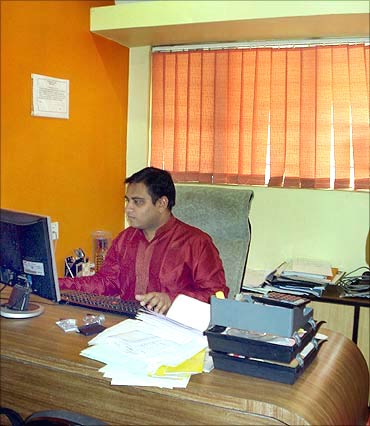

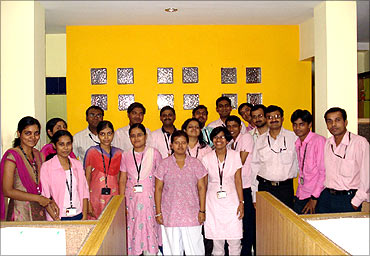
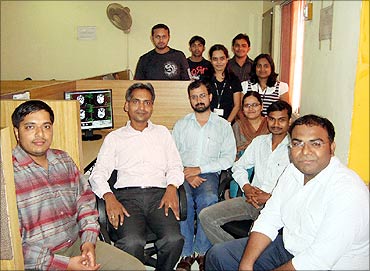
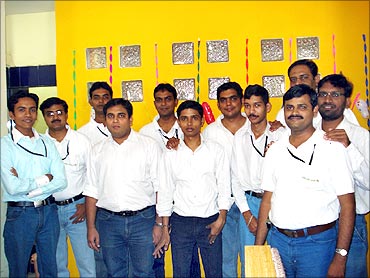
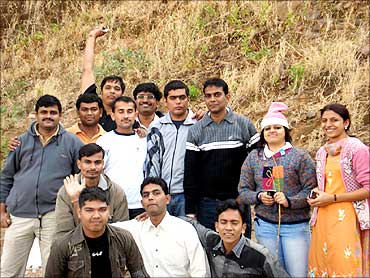
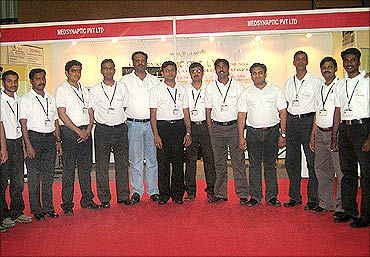
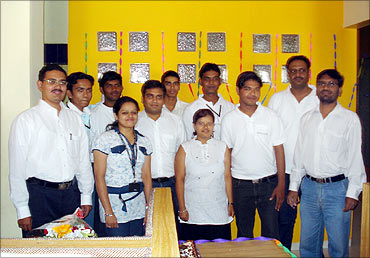
article